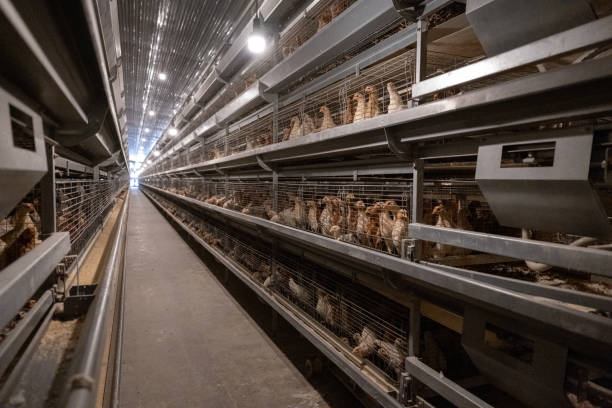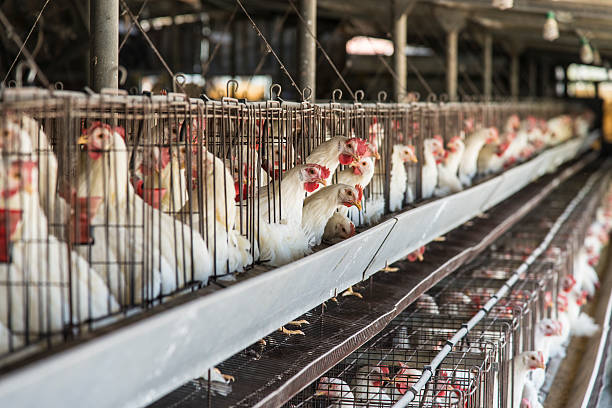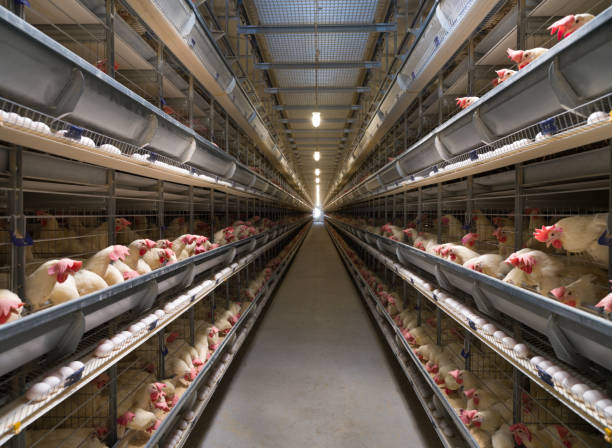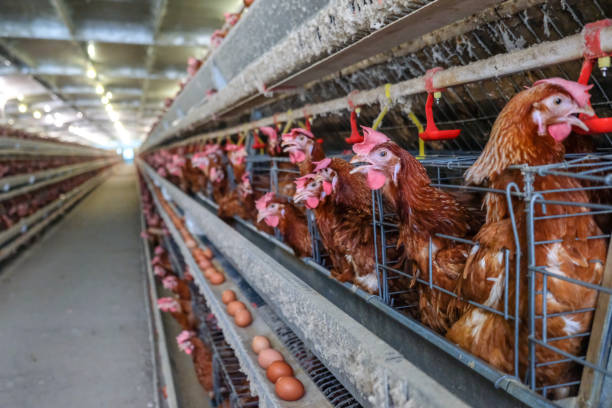
Battery Cage Solutions for 50,000 Birds in Zambia
Battery Cage Solutions for 50,000 Birds in Zambia
Zambia, with its burgeoning agricultural sector, presents a significant opportunity for poultry farmers, particularly those focused on egg production and broiler farming. Scaling up to a 50,000-bird operation is an ambitious but achievable goal, and selecting the right housing system is crucial for maximizing efficiency, optimizing bird welfare, and ultimately, ensuring profitability. For many Zambian farmers, battery cage systems offer a compelling solution for managing large flocks, and this article will delve into the specifics of implementing such a system for 50,000 birds, covering key considerations from cage selection to environmental control and waste management.
Let’s first address the “elephant in the room” – animal welfare concerns. Battery cages have faced scrutiny due to perceived limitations on bird movement. However, modern battery cage designs have evolved significantly. These enhanced systems focus on providing better living conditions, easier access to feed and water, and improved hygiene compared to traditional deep litter systems, especially in environments where managing disease outbreaks can be challenging. In hot or humid climates like Zambia, effective climate control in a cage system also aids in mitigating heat stress, a major contributor to reduced productivity and bird mortality.
The primary advantage of battery cages lies in their efficiency. Housing 50,000 birds in a battery cage system allows for optimal space utilization. Compared to floor systems, cage systems can accommodate a significantly higher number of birds per square meter, reducing land requirements and construction costs. This is particularly relevant in areas where land is a premium. Moreover, the tiered structure of battery cages simplifies management. Feeding, watering, and egg collection can be automated, reducing labor costs and improving consistency. Waste management is also more manageable, as droppings are collected separately, minimizing ammonia buildup and improving air quality within the poultry house.
Choosing the right battery cage system is paramount. Several factors need to be considered:
* **Cage Capacity and Dimensions:** The number of birds per cage will influence their comfort and productivity. Overcrowding can lead to stress and decreased egg production. Ensure that the cage dimensions meet the minimum spacing requirements recommended for laying hens or broilers, depending on your farming focus. For a start, different designs of cages are available. A-frame cages offer a good balance of cost-effectiveness and ease of management, while H-frame cages allow for greater automation and higher bird densities. Layer cages designed to house 3-5 birds come in tiered designs, maximizing floor space.
* **Material Quality and Durability:** The cages should be constructed from high-quality, corrosion-resistant materials such as galvanized steel. This is critical for withstanding the harsh environmental conditions and preventing rust, which can compromise the structural integrity of the cages and pose a health hazard to the birds. Consider the gauge of the wire mesh used – thicker wires offer greater durability and longevity.
* **Automation Features:** The level of automation you choose will depend on your budget and labor availability. Automatic feeding systems ensure that all birds receive a consistent supply of feed, minimizing waste and promoting uniform growth. Automatic watering systems provide a continuous source of fresh water, reducing the risk of dehydration and disease transmission. Automatic egg collection systems streamline the egg collection process, reducing labor costs and minimizing egg breakage. Automatic manure removal systems enhance hygiene and reduce ammonia emissions.
* **Ventilation and Climate Control:** Maintaining optimal temperature and humidity levels is vital for bird health and productivity. In Zambia’s climate, good ventilation is crucial. Consider installing exhaust fans to remove stale air and bring in fresh air. Evaporative cooling systems, such as pad and fan systems, can help lower the temperature inside the poultry house during hot weather. Insulation can also play a role in regulating temperature, particularly during cooler months. Poor ventilation will lead to an increase in ammonia levels, respiratory issues, and overall reduced production.
The physical structure housing the battery cage system is just as important as the cages themselves. The building should be designed to provide adequate protection from the elements, while also facilitating ventilation and climate control. Key considerations include:

* **Building Dimensions and Layout:** Calculate the required floor space based on the dimensions of the cages and the desired bird density. Ensure that there is sufficient aisle space for workers to move around and perform their tasks. The layout should be designed to optimize workflow and minimize the distance that workers need to travel.
* **Building Materials:** Choose durable and weather-resistant materials for the walls and roof. Concrete or brick walls provide good insulation and protection from the elements. A well-insulated roof will help regulate the temperature inside the building. It is wise to consider a concrete foundation to discourage rodents and maintain structural integrity.
* **Ventilation Openings:** Incorporate ventilation openings along the walls and roof to allow for natural air circulation. These openings should be adjustable to control the amount of airflow depending on the weather conditions.
* **Lighting:** Natural light or artificial lighting can be used to create a suitable environment for the birds. Proper lighting is essential for stimulating egg production in laying hens and promoting growth in broilers.
* **Biosecurity Measures:** Implement biosecurity measures to prevent the introduction and spread of diseases. This includes controlling access to the poultry house, providing foot baths for workers, and regularly disinfecting equipment.
Effective waste management is critical for maintaining a healthy environment and preventing pollution. Battery cage systems simplifies waste collection through manure belts. Options for managing manure include:
* **Composting:** Composting is a cost-effective way to convert poultry manure into a valuable fertilizer. The manure is mixed with carbon-rich materials such as straw or wood shavings and allowed to decompose in a controlled environment.
* **Anaerobic Digestion:** Anaerobic digestion is a process that breaks down organic matter in the absence of oxygen, producing biogas and digestate. Biogas can be used as a renewable energy source, while digestate can be used as a fertilizer.
* **Direct Application to Land:** Poultry manure can be applied directly to land as a fertilizer. However, it is important to ensure that the manure is properly treated to reduce the risk of nutrient runoff and pathogen contamination. Proper storage and regular collection are fundamental to minimizing odor and potential health problems.
Beyond the physical infrastructure, successful implementation of a battery cage system requires careful attention to bird management. Key aspects include:
* **Chick/Pullet Selection:** Choose healthy and vigorous chicks or pullets from reputable suppliers. The quality of the chicks will have a significant impact on their subsequent performance. Specifically select breeds well-suited to battery cages for your chosen product: egg laying or meat production.
* **Feeding and Nutrition:** Provide a balanced diet that meets the nutritional requirements of the birds. Consult with a poultry nutritionist to develop a feeding program that optimizes growth and egg production. Ensure that the feed is fresh and free from contaminants.
* **Watering:** Provide a constant supply of clean and fresh water. Regularly check the watering system to ensure that it is functioning properly. Monitor water consumption to detect any potential health problems.
* **Health Management:** Implement a comprehensive health management program to prevent and control diseases. This includes vaccinating the birds against common poultry diseases, monitoring their health status, and providing prompt treatment for any illnesses.
* **Environmental Monitoring:** Regularly monitor the temperature, humidity, and air quality inside the poultry house. Make adjustments to the ventilation and climate control systems as needed to maintain optimal conditions for the birds.
Implementing a battery cage system for 50,000 birds requires a significant investment. It is important to develop a detailed business plan that considers all costs and revenues. This includes:
* **Capital Costs:** The cost of purchasing the cages, constructing the building, and installing the ventilation and climate control systems.
* **Operating Costs:** The cost of feed, water, electricity, labor, and veterinary services.
* **Revenue Projections:** The expected revenue from the sale of eggs or meat.
* **Financial Analysis:** A financial analysis should be conducted to determine the profitability of the project. This includes calculating the return on investment, payback period, and net present value.
Finally, it is important to consider the environmental impact of the poultry operation. Implement measures to minimize pollution and promote sustainability. This includes:
* **Reducing Water Consumption:** Use water-saving technologies such as nipple drinkers and closed-loop cooling systems.

* **Minimizing Energy Consumption:** Use energy-efficient lighting and ventilation systems.
* **Recycling Waste:** Compost poultry manure or use it as a fertilizer.
* **Protecting Water Resources:** Implement measures to prevent nutrient runoff and pathogen contamination of water sources.

Embarking on a 50,000-bird battery cage operation in Zambia is a substantial undertaking that holds significant potential for successful poultry farming. Careful planning, meticulous execution, and a commitment to best practices are key. From the selection of appropriate cage systems to advanced bio-security protocols, all play an important role. By taking a calculated approach, integrating sustainable practices, and prioritizing bird welfare, Zambian farmers can realize the full potential of battery cage systems, elevating their businesses and contributing to the growth of the country’s agricultural sector, meeting the rising demand for eggs and poultry meat. This approach promotes efficiency, minimizes environmental impact, and ensures the long-term sustainability of the poultry farming venture. The future of poultry farming in Zambia is bright and full of opportunities for growth.
